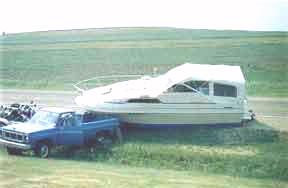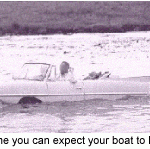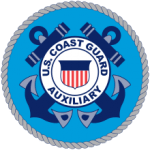More than 95 percent of recreational boats in the United States are trailerable. If you’re a trailer-boater like me, you know that our recurring nightmare is looking into the rearview mirror and seeing our trailer, with boat astride, departing company with our tow vehicle. I’ve had friends lose their rigs, one on an interstate highway as he watched his 28 footer rolling through the median. So, if you don’t think trailer safety should hold a special place in your heart, you probably have never towed a boat!
Here are some tips I compiled from personal experience, and from boaters who have had experience with short and long distance tows.
Make certain your tow vehicle has the horsepower to do the job. If it doesn’t have an oil cooling system to help keep it from overheating, put one in. A burned-out transmission or jeopardizing safety is not a good trade-off for a reliable towing vehicle, even if you have to spend a little more.
Consider the size, weight and length of your boat and capacity of the trailer when you’re shopping for a tow vehicle. And remember…a rear-drive vehicle is superior to a front wheel drive vehicle when it comes to getting your boat in and out of a slippery boat ramp.
Find a wide open space somewhere, like an empty parking lot, and practice backing, turning and maneuvering your trailer. Set up some empty milk jugs to look like the edges of a boat ramp. If you make a mistake here, you lose an empty milk jug.
A good trick for practicing backing a trailer is to put your hand on the bottom of the steering wheel. Move your hand to the left, the trailer goes left. Guess what happens when you move your hand to the right?
There are good trailer hitches and dangerous ones. A bumper hitch should never be used and is illegal for towing in many states.
Modern tow vehicles have more electronics than NBC. Therefore, you should never try to modify or install a trailer wiring harness unless you really know what you’re doing. You might just burn out a very expensive computer module.
Periodically, check your trailer for cracks in the welds, and tighten any bolts that may have worked loose. Trailers take a real beating on rougher roads, and the roads that lead to lakeside launch ramps are usually rougher than normal for some reason.
Take the time to attach the trailer to the tow properly, and make sure that the ball is properly engaged and locked on the hitch.
Make sure the electrical connections to the lights and brakes are operating. And before you back a trailer into the water, unplug the lights. It’ll help save your bulbs. Just don’t forget to plug them back together before you take off again.
Connect a safety chain from the trailer post to the bow of your boat, so that a sudden surge won’t force the boat to slide off the back of the trailer.
Safety chains should be crossed underneath the hitch before attaching them. Use bolted connections rather than “S” hooks, which can actually s-t-r-e-t-c-h under severe strain. Adjust the chains if necessary to keep them from dragging along the ground.
Attach a chain or extra heavy-duty strap from the back of the boat to the trailer to keep the boat from lurching forward into the rear of the tow vehicle if you need to stop quickly. The bow of your boat sticking through the back of your tow vehicle is not a pretty sight!
Check your boat straps, chains and winch cable regularly, and replace them if they look frayed or worn.
Inspect the trailer bearings and grease them as needed. If you use “bearing buddies,” make sure they’re tight on the axle and filled (but not overfilled) with grease. Overfilling can blow the inner seals out of their housing.
Before leaving home or leaving the launch ramp, open a can of pop and take a leisurely stroll around the trailer and the tow vehicle. Make sure everything is hooked up properly, locked, strapped down, secure and, if your trailer has a spare tire, make sure it’s fully inflated.
When you get to the launch ramp, take your time getting the boat squared away before launching. These minutes you spend making sure all your boating safety equipment is ready will give your wheels and bearings a chance to cool down. If they’re hot when you dip them into that cold water, you’re taking a risk of seizing the bearings.
If your trailer has brakes (recommended for gross weight over 1,500 pounds), make sure they are adjusted and working properly. If they are “surge” brakes, see to it that the brake fluid reservoir is full.
Keep your trailer tires and your tow vehicle tires properly inflated.
Make sure the tire jack you intend to use in an emergency will fit properly beneath the axles or lifting points… before you have to use it.
Keep a fire extinguisher in the tow vehicle or on the winch stem when trailering. Lots of things can happen to put it to good use…a bearing catching fire, someone throwing a cigarette into or onto your boat when you’re stopped for lunch…use your imagination.
Make sure you know your state trailering laws. Most states require a special permit to tow if your load exceeds eight feet.
Always stay in your car while you launch your boat. No driver, no access to the brake pedal, which activates the brake on all four wheels. The parking or hand brake only sets the rear wheels.
Carry spare bulbs for your trailer lights.
Make sure that 5 to 7 percent of the total weight of the tow (boat, motor, contents and trailer) is on the tongue of the trailer. More, and the tow vehicle will handle poorly. Less, and the trailer is likely to fishtail.
Follow these tips and it’s likely your trailering experiences will be uneventful and safe.
Related Commander Bob Articles:
Submit your review | |








